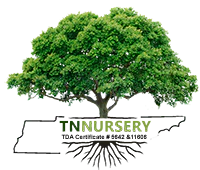Filters
Ah, can you smell that? It’s the enchanting aroma of fragrant plants. TN Nursery’s selection of aromatic flowering plants has a scent like love. Our company has been family-operated since 1959, and we offer buy one, get one free deals on almost all our flowers, including sweet-scented floral bloomers.
Reasons to Grow Fragrant Plants
Treating your olfactory receptors to the musky, refreshing scents of sweet-scented flowers may be the most popular reason to add to them to your garden, but it’s far from the only one.
Sweet memories: The nose is a powerful organ, and it connects to one that’s even more powerful: the brain. When you breathe in a lovely flower or scentful flower that you’ve enjoyed before, even long in the past, you’ll instantly be hit with nostalgia and warm memories. Fresher air inside and out: Rather than light a candle or plug in an air purifier, use sweet-scented flowers instead. Their aroma will fill your senses and have you eagerly inhaling the air for more.
Pest repellence: One of the first lines of defense in keeping pests out can be aromatic flowers. The scents that you find pleasing can be too much for some pests to handle, causing them to hightail it elsewhere. Biodiversity: Many other species prefer the soft, wafting scent of flowers, from hummingbirds to butterflies and bees. They’ll pollinate and spread.
And Beauty Too
Besides their enchanting smells, sweet-scented flowers are also renowned for their beauty. At TN Nursery, we stock a rich supply of aromatic flowers in every hue, from wildflowers in packs of 25 to white hibiscus and the dazzling red crepe myrtle.
Flowering flowers don’t dominate all the beauty, of course. Non-flowering flowers and trees smell just as delightful, from the uniquely shaped fan clubmoss to the tall, stately cedar tree.
TN Nursery makes it easy to find the flowers you want. You can utilize our website to screen effects by blooming season, blooming color, flower height at maturity, planting zone, and other growth requirements to discover your perfect flower.
Can You Smell the Savings With Garden Plants Nursery
Furnishing your garden with fragrant plants is more affordable than ever at TN Nursery. We consistently have flowers and trees on clearance prices and offer steep discounts on 95 percent of our stock.
For the 60+ years we’ve been in business, we’ve happily served thousands of customers. They consistently rely on our services for our quality, fast shipping, and affordable prices. Once you explore our selection, we hope you’ll become part of our family.
























